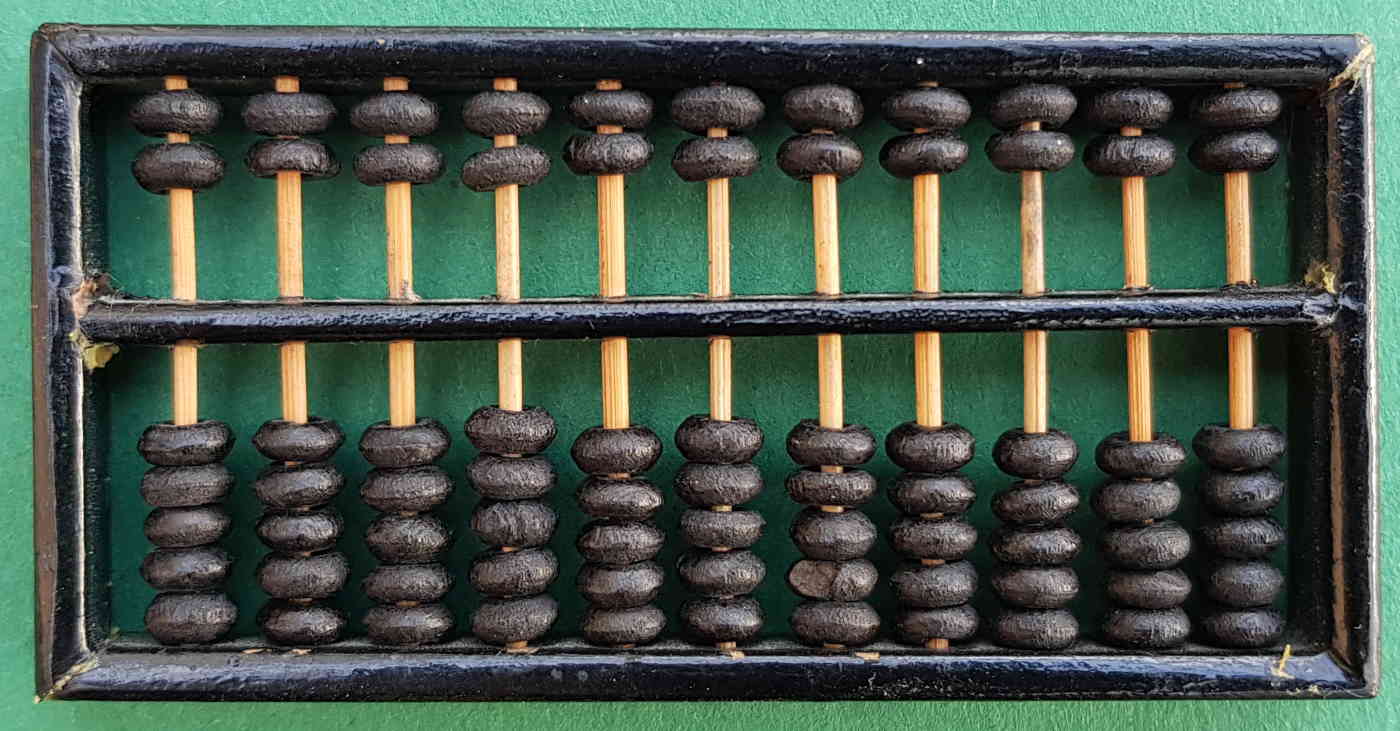
With a real abacus, constant practice is indispensable in achieving virtuosity in calculating speed. Abacus Apps on touch-screen tablets are better simulations. The Java version of the abacus is a limited simulation of the real device because the fingering technique is completely obfuscated by the mouse.

In certain calculations, the middle finger is used to move beads in the upper deck. impossible to decide whether the depicted object is an abacus or a counting board.129 The picture published in the edition. Beads in lower deck are moved up with the thumb and down with the index finger. With a Chinese abacus, the thumb and the index finger together with the middle finger are used to manipulate the beads. Proper finger technique is paramount in achieving proficiency on the abacus. Similarly, the fourth column representing the number 7, is counted with 1 bead from the top-deck (value 5) and 2 beads from the bottom-deck ( each with a value of 1, totaling 2) the sum of the column ( 5+2) is 7. Referring to the Figure/Applet above, the third column (from the left), representing the number 8, is counted with 1 bead from the top-deck (value 5) and 3 beads from the bottom-deck ( each with a value of 1, totaling 3) the sum of the column ( 5+3) is 8. Shop Amazon for Abacus Chinese Silk Scroll / Picture Scroll / Wall Scroll - The Dragon Strikes the Sun 30X100cm (S058 US) and find millions of items. If your browser is Java-capable then the applet, above, will identify the parts of the abacus in your browser's status-area as you move your mouse-pointer over it the beads will move when you click on them and the value of each column will be displayed on the top frame. Abacus Applet: Numeric representation of the number: 87,654,321. Floating point calculations are performed by designating a space between 2 columns as the decimal-point and all the rows to the right of that space represent fractional portions while all the rows to the left represent whole number digits. The right-most column is the ones column the next adjacent to the left is the tens column the next adjacent to the left is the hundreds column, and so on. The 5+2 lower deck incorporates a place setting vernier band, adjustable using a small wheel on the side of the frame. The lower deck is a 13 rod 5+2 Chinese abacus, whereas the upper deck is an 18 rod 4+1 bead one.

CountingĪfter 5 beads are counted in the lower deck, the result is "carried" to the upper deck after both beads in the upper deck are counted, the result (10) is then carried to the left-most adjacent column. In the 1950s Lee Kai Chen invented an improved double deck abacus (image above). PREPARING THE ABACUS: The abacus is prepared for use ("zeroed") by placing it flat on a table and pushing all the beads on both the upper and lower decks away from the beam by sliding the thumb along the beam.īEAD VALUES: Each bead in the upper deck has a value of 5 each bead in the lower deck has a value of 1.īeads are considered counted, when moved towards the Beam- the piece of the abacus frame that separates the two decks.


 0 kommentar(er)
0 kommentar(er)
